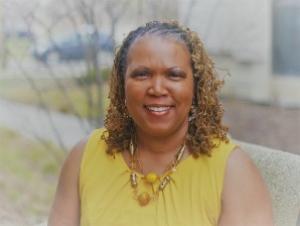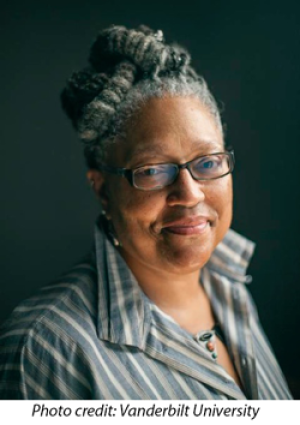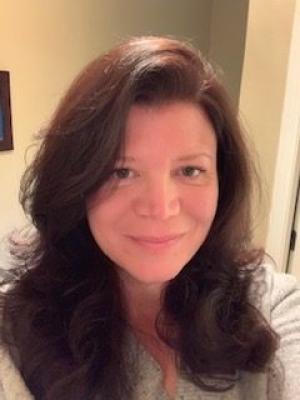Resources

I like questions. Interrogatives entice me. Answers are low-hanging fruit. Social media lends towards making everyone an expert, and experts tend to have all of the answers. However, questions can change the course of a conversations. Inquiries make space for new ideas, new practices, new programs, and new ways of being. As a biblical scholar questions from this text appeal to me. God asks Cain, “Where is your brother Abel? (Genesis 4.9)” The Lord inquires of Ezekiel, “Can these bones live? (Ezekiel 37:3)” Jesus quizzes the crowd, “Who touched me? (Luke 8:45)” Each question respectively provides a lesson on communal accountability, national atonement, and social acceptance. Questions can change the course of a conversation. Questions allow one to pivot an approach to pedagogy. Before I begin class, I often ask my students, “How are you? How’s it going?” There is no rush to exegesis, cultural studies, biblical interpretation, or any path to hermeneutics. I frequently start our sessions checking in and making space just to sit, hear, and be. It is challenging to process words and thoughts of people distant from us when we are wrestling with trauma and pain close to home. Since March these moments have taken on more meaning. It is one thing to pause not knowing what is unraveling in another person’s life. It is quite another to stop when what stumps you, also stumps me. To begin class unaware of any individual difficulty presents one type of challenge. However, when there is a communal, national, global vicissitude that is no respecter of persons, the classroom becomes a place where traditional pedagogical hierarchy is impudent and irrelevant. Yes, there is the professor, and of course, there are students. Yet, an invisible pathogen called COVID-19 has compromised all displays of visible power. In our current context asking, “How are you?” takes on new meaning. As I ask my students about their well-being, it gives me the space to ask myself, “How am I doing?” Such fragile moments thrust professors to center stage of navigating self-care and classroom-care. In this pandemic when each day there is a startling increase in cases, a rising death toll, and still little progress towards a vaccine, pedagogy and pastoring have become strange bedfellows. Such times call for professors to tap into emotional reserves while discerning portals of spiritual connection. Our tasks before reading essays, facilitating conversations, or sharing our slides via Zoom, require that we don ecclesial attire, access priestly garb, and step into the role of professor-pastor-priest-rabbi-iman-cleric-shaman-spiritual sage. I am not belittling these much-needed roles by suggesting they are easily or readily adaptable. These professions require much credentialing and processes. As an ordained National Baptist and Disciples of Christ minister, I know this from experience. I must admit that prior to this COVID-19 crisis, I kept “Rev.” out of the classroom so “Dr.” would carry the day. Today is a new day. Both must enter fully in light of this global disease and dis-ease. Now I ask new questions before we dive into the gospels, epistles, Jesus, or the mother of James and John. Here are the inquiries from which my pedagogy now proceeds: What gives you joy? Social media and health reports make it the default to dwell on the negative. To seek joy in a death-dealing context is fodder for educational reform. Our coronavirus-context focuses on the pessimistic. The classroom should be the place for cultivating the positive even when its opposite seems overwhelming. As a professor, I want my pedagogy to challenge the norm, even as we live during abnormal times. What worries you? We do not teach in a socio-political or socio-economic vacuum. Students had worries and angst pre-COVID-19. But now, families, finances, challenges to faith, physical wellness, and friendships have all undergone some shifting. Our students’, and our, anxieties about these and other matters are more pronounced. While wrestling with this pandemic, students remain curious about finishing the semester. I wish . . . Okay so these last two are not questions, but they seek information nonetheless. Fill in the blank queries offer a way for students to express how they feel. To engage in wishful thinking provides a forum for helping us see that things won’t be like this always. A pedagogical pivot to wishing helps us ponder and put into place what we project for the future. I am grateful for . . . When the gravitas of sheltering in place can weigh heavily on all of us, finding something for which to be grateful is paramount. This should not be an exercise in comparison or competition, but an act of contemplative practice in chaos. This is a practice of thanksgiving in the center of turmoil. Questions can change the course of a conversation. Questions allow us to pivot our approach to pedagogy. Questions help us pray through until we get through. *Original blog published April 23, 2020
In this time of urgent potential, higher education has a particular role and responsibility to re-frame and fully center our collective commitment around the well-being and thriving of Black and Brown people. Predominantly white institutions have long noted, but tolerated, racial disparities in rates of retention, persistence to graduation, and grade point average--all data that indicate students of color are being negatively impacted by hostile racial climates in so many of our institutions. Those of us who work within higher education, especially faculty, can and must transform our institutions by centering the experiences of Black and Brown students. Rev. Dr. Jennifer Harvey will speak to these issues, by sharing her journey as Faculty Director of the Crew Scholars Program at Drake University. Crew is an academic excellence and leadership development program for students of color at Drake. In its eight years of existence, among students in Crew, Drake has seen the gpa gap close, student of color retention rates soar, and Crew Scholars persistence to graduation outpace and outperform all other Drake students (including white students).
Attending to the public pressure to rethink societal oppressions requires trustees, faculty, student and administrative alignment. Leaders taking risks for prophetic agendas is the work of justice in theological education. Do not be forced into silence! Dr. Nancy Lynne Westfield hosts Dr. L. Serene Jones (Union Theological Seminary).

emilie m. townes Dean and E. Rhodes and Leona B. Carpenter Professor of Womanist Ethics and Society Vanderbilt Divinity School The opening paragraph of the Vanderbilt University Statement of Commitments: The Divinity School is committed to the faith that brought the church into being, and it believes that one comes more authentically to grasp that faith by a critical and open examination of the Hebraic and Christian traditions. It understands this faith to have import for the common life of men and women in the world. Thus the school is committed to assisting its community in achieving a critical and.
What are the practices which might assist us as we endeavor to still ourselves to sustain the genuine? Who are the trusted people who we rely upon? What role does the body play in sustaining the sound of the genuine, the feeling of the genuine, the experience of the genuine?
The current rebellions and outrage is appropriate given the history of race politics in the USA. White scholars are called to use their curiosity, imagination and teaching competencies to embed into the curriculum anti-racist content, tactics, and strategies. Find ways not to let racial violence be overwhelming; practice deep listening, dialogue and community building with minoritized people. Dr. Nancy Lynne Westfield hosts a conversation with Dr. Jan Love (Candler School of Theology - Emory University).

Who or what is God? Words can only say so much about who God is or what God isn’t. Thankfully our thinking isn’t limited to words. Through Art Theology -- using the creative languages of the arts -- we can form new ideas, questions, and perceptions about God. Let the words go and think in color. Thinking back to the very first ideas of God you ever had, what color comes to mind? Gray... Gray was the color of the beard of the old man in the sky, the first image I had of God the Father. Gray was the color of the clouds he sat on. In painting this first idea, I used cold, dark, black grays illustrating the vast remoteness of this idea of God. I began incorporating yellows and whites and softening places within the gray, creating warmth in the painting. As I did so I recalled my childhood struggle to comprehend how this cold, dark, mysterious God also made me and loved me unconditionally. [caption id="attachment_247214" align="alignnone" width="467"] The Cloud of Unknowing Angela L. Hummel 11x14 Acrylic on Wood[/caption] My concept of God changed when I was introduced to the idea of Jesus and the idea of God’s personal love. The gray remains but softens even more and I introduce an abstract brown line. God’s love expressed through Jesus felt so intimate and personal that I have at times a sense of knowing the nook of his neck, of having rested my head upon that shoulder line. Yet, I could not tell you what his eyes or nose look like. In some ways I do not know him at all. In other ways, that personal love of God is the most real thing in my experience. [caption id="attachment_247215" align="alignnone" width="390"] Personal Love Angela L. Hummel 11x14 Acrylic on Wood[/caption] Stepping back and looking at the first two paintings I felt a new question arising. I was physically uncomfortable as I reflected on how masculinely gendered my ideas of God had been. No matter what we think and understand theologically about God language, we carry these memories in our bodies. I felt myself reaching for new colors and lines: purples, blues, gold, and undulating lines. This next painting incorporates my reflections on Shekinah. Both women and men are made in the image of God. The divine feminine reveals a love that conceives, gestates, labors, births, nurtures, and sustains. [caption id="attachment_247216" align="alignnone" width="467"] Shekinah Angela L. Hummel 11x14 Acrylic on Wood[/caption] God is love. This love is mysterious, personal, intimate, boundaried, male, female, non-binary, fluid like water, beyond our comprehension. How can we reflect the love of God and learn to love in this dynamic way? Regardless of bodily function, all of us can learn to love more deeply by reflecting on how love conceives, gestates, labors, births, and sustains. The Christian focus on moral theology has led to judgmentalism that has caused some people to reject religion. Why don’t we devote as much attention to Christian love -- what this love is and how we live it? We need new ways of exploring this vast idea. We need Art Theology. Art Theology has helped me to move away from a monologic pedagogy into a dialogic way of teaching. When my students paint the colors and lines of their thinking about God they move into new ideas, questions, and dialogue that discursive reasoning alone could not take us into. The understandings that we have arrived at through this method have transformed my classroom into a dynamic place of collaboration where together we have learned to see God as truly other, for who God is, not constrained by our previous limited definitions and arguments. Angela L. Hummel
Dr. Willie James Jennings (Yale Divinity School) is this week’s guest on the Dialogue On Teaching podcast. Jennings and Dr. Nancy Lynne Westfield discuss his upcoming book, “After Whiteness: An Education in Belonging,” which will be published in October 2020.